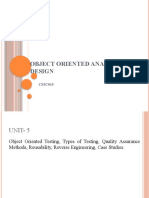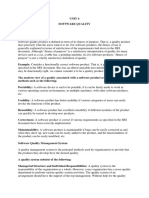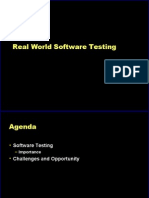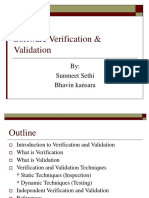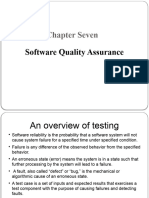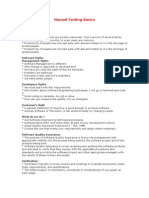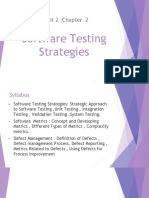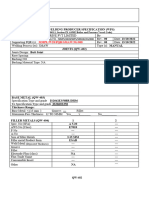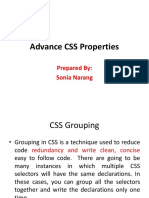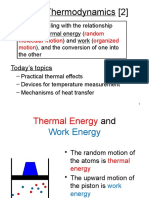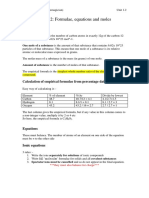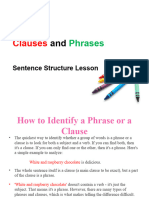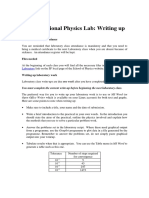0% found this document useful (0 votes)
284 views29 pagesStqa Unit I (Tybsc)
Software testing is a method to check if a software product matches expected requirements and is defect-free. There are many types of software tests, each with specific objectives like acceptance, integration, unit, functional, performance, regression, stress, and usability testing. A test management plan helps prioritize which types of testing provide the most value given available time and resources. Software reviews are systematic inspections of software by individuals working together to find and resolve errors early in the development lifecycle. Software quality assurance is a set of activities to ensure processes, procedures, and standards are suitable and implemented correctly throughout development.
Uploaded by
Rohit KoliCopyright
© © All Rights Reserved
We take content rights seriously. If you suspect this is your content, claim it here.
Available Formats
Download as PDF, TXT or read online on Scribd
0% found this document useful (0 votes)
284 views29 pagesStqa Unit I (Tybsc)
Software testing is a method to check if a software product matches expected requirements and is defect-free. There are many types of software tests, each with specific objectives like acceptance, integration, unit, functional, performance, regression, stress, and usability testing. A test management plan helps prioritize which types of testing provide the most value given available time and resources. Software reviews are systematic inspections of software by individuals working together to find and resolve errors early in the development lifecycle. Software quality assurance is a set of activities to ensure processes, procedures, and standards are suitable and implemented correctly throughout development.
Uploaded by
Rohit KoliCopyright
© © All Rights Reserved
We take content rights seriously. If you suspect this is your content, claim it here.
Available Formats
Download as PDF, TXT or read online on Scribd
/ 29










